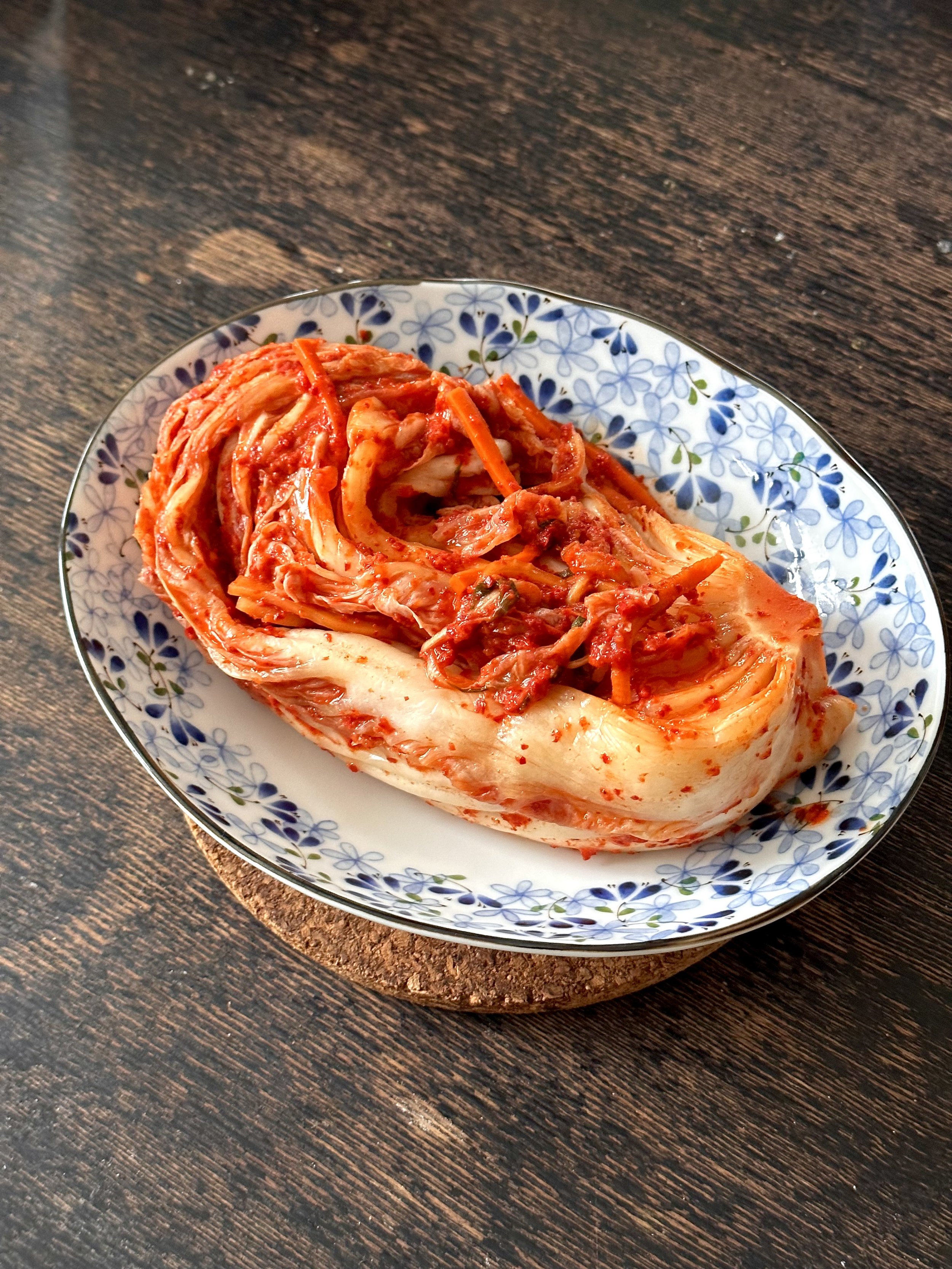
kimchi.
김치
As many variations as there are vegetables.
Ingredients:
2 heads of napa cabbage, or 2kg. (Use any veg you would like.)
(200g) 10% of the weight of the cabbage, kosher salt.
2L filtered water. 1:1 w/the weight of cabbage.
fermenting paste.
750ml dashi/broth.
25g doenjang, (soybean paste)
25g glutinous/sweet rice flour
5g raw soybean powder.
15g saeujeot, (salted, fermented shrimp)
15g sautéed crab/shrimp paste.
135g fish sauce, use good quality.
30g turbinado sugar.
85g garlic, chopped fine.
200g gotchugaru.
1 bunch scallion/Chinese chives.
veg of choice. (carrots & daikon are traditional).
dashi/broth.
800mL filtered water.
9g dried scallop.
8g kombu.
2g dried anchovy.
3 stalk scallion.
10g shiitake mushroom.
1/4 white onion.
Equipment:
mixing bowls.
large container.
blender/food processor.
medium stockpot/pan.
baking tray & wire rack.
Yield:
about 2kg of kimchi.
Execution:
dashi/broth.
Water in replace of dashi is good, but using dashi is greater flavour.
Add water to a pot alongside the rest of the ingredients, simmer for 1-2 hours, do not let the temperature go above 180°F, this will cause the stock to go bitter.
Remove from the heat and strain, set aside and let cool to room temperature.
2. fermenting paste.
Whisk together the rice flour, soybean powder and soybean paste with a bit of the dashi to make a thin paste.
Blend the salted shrimp paste and sauteed crab paste together with a bit of the dashi to create a thin paste, add this to the rest of the mixture.
Add the rest of the dashi and fish sauce, stir to combine.
Add the sugar, stir to combine.
Add the garlic & gochugaru.
Add any chopped vegetables you would like, traditionally: carrot, daikon, scallion/garlic chives, onion, ginger, etc.
Apply a layer of plastic film overtop the mixture and let ferment for 1 day before using.
3. brine, season, ferment.
Cut a bit of the root end of the cabbage, but not too much as you want the cabbage to stay in one piece, slice the cabbage into quarters, lengthwise.
Weigh your cabbage. In a large container, add the same weight in water. Then, add 10% of that weight in kosher salt and whisk until all the salt is dissolved.
Add the cabbage to the brine, keep the cabbage fully submerged by placing a heavy plate/object overtop. Let brine for 30 minutes.
Remove from the brine and squeeze out as much water as possible.
Generously apply salt in between each leaf of the cabbage, place onto a baking tray lined with a wired rack (or use a colander) for 2-3 hours at room temperature.
Rinse the cabbage to remove excess salt, lightly squeeze the cabbage to remove any excess water, dry with a paper towel. Taste the cabbage at this point for seasoning, it should taste like well-seasoned cabbage but not overly salty.
Don’t wear gloves for the next step, Sonmat, 손맛, hand taste. Or do wear gloves, it probably doesn’t matter, I don’t actually know.
Generously apply the fermenting paste in between each layer and leaf of the cabbage. Place it into a sterile container and apply a layer of cling film on the surface of the kimchi. Cover the container with a loose-fitting lid and let it ferment at room temperature for 3-7 days or until you achieve your desired sour/acidic and funky flavor. Store it in the fridge for up to 3-6 months.
